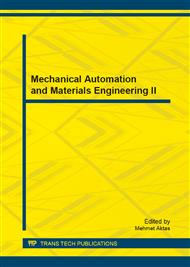p.207
p.213
p.218
p.227
p.232
p.237
p.242
p.247
p.251
The Effects of Nucleation on Soot Dynamic Evolution Based on the Method of Moments
Abstract:
The mathematical model of soot dynamical evolution process is built based on the discrete particles population balance theory, including particle nucleation, collision coagulation, oxidation and surface growth processes; a corresponding numerical model is established using Lagrange interpolation method of moments. Based on the perfectly-stirred reactor combustion model, coupled the numerical model with detailed chemical kinetic model. The computing platform of soot particle growth evolution is established. Meanwhile, three nucleation models are built for the soot nucleation in this paper. Two chemical reaction mechanisms are used to study different fuels combustion process. The related information of soot particle growth evolution is obtained, the effect of different nucleation model on other dynamical events such as coagulation, oxidation and surface growth processes is discussed.
Info:
Periodical:
Pages:
232-236
Citation:
Online since:
June 2014
Authors:
Keywords:
Price:
Сopyright:
© 2014 Trans Tech Publications Ltd. All Rights Reserved
Share:
Citation:


